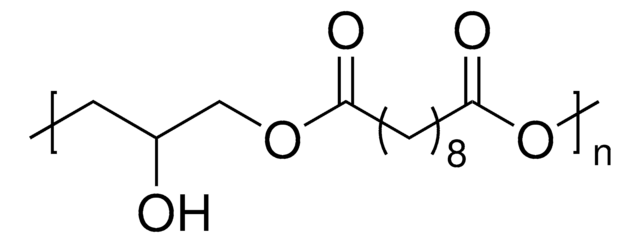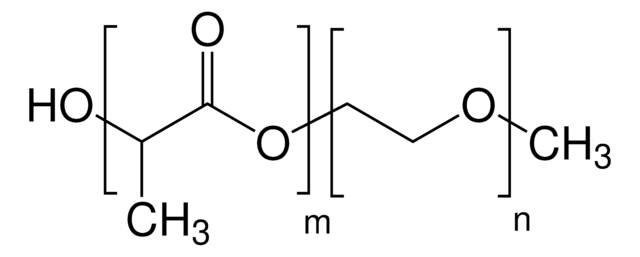925624
Redox Responsive Poly(ethylene glycol)-block-poly(ε-caprolactone)
PEG average Mn 5,000, PCL Mn 15,000
Synonym(s):
Block copolymer, PEG-PCL with disulfide linkage, PEG-SS-PCL, Stimuli-responsive
About This Item
Recommended Products
form
solid (could be powder/granules/chunks)
Quality Level
mol wt
PCL Mn 15,000
PEG average Mn 5,000
color
white to beige, light yellow
storage temp.
2-8°C
Related Categories
Application
Storage Class
11 - Combustible Solids
wgk_germany
WGK 3
flash_point_f
Not applicable
flash_point_c
Not applicable
Certificates of Analysis (COA)
Search for Certificates of Analysis (COA) by entering the products Lot/Batch Number. Lot and Batch Numbers can be found on a product’s label following the words ‘Lot’ or ‘Batch’.
Already Own This Product?
Find documentation for the products that you have recently purchased in the Document Library.
Articles
Immunosuppressive tumor-associated myeloid cells (TAMC) are responsible for glioblastoma (GBM) resistance to immunotherapies and existing standard of care treatments. This mini-review highlights recent progress in implementing nanotechnology in advancing TAMC-targeted therapies for GBM.
Our team of scientists has experience in all areas of research including Life Science, Material Science, Chemical Synthesis, Chromatography, Analytical and many others.
Contact Technical Service






